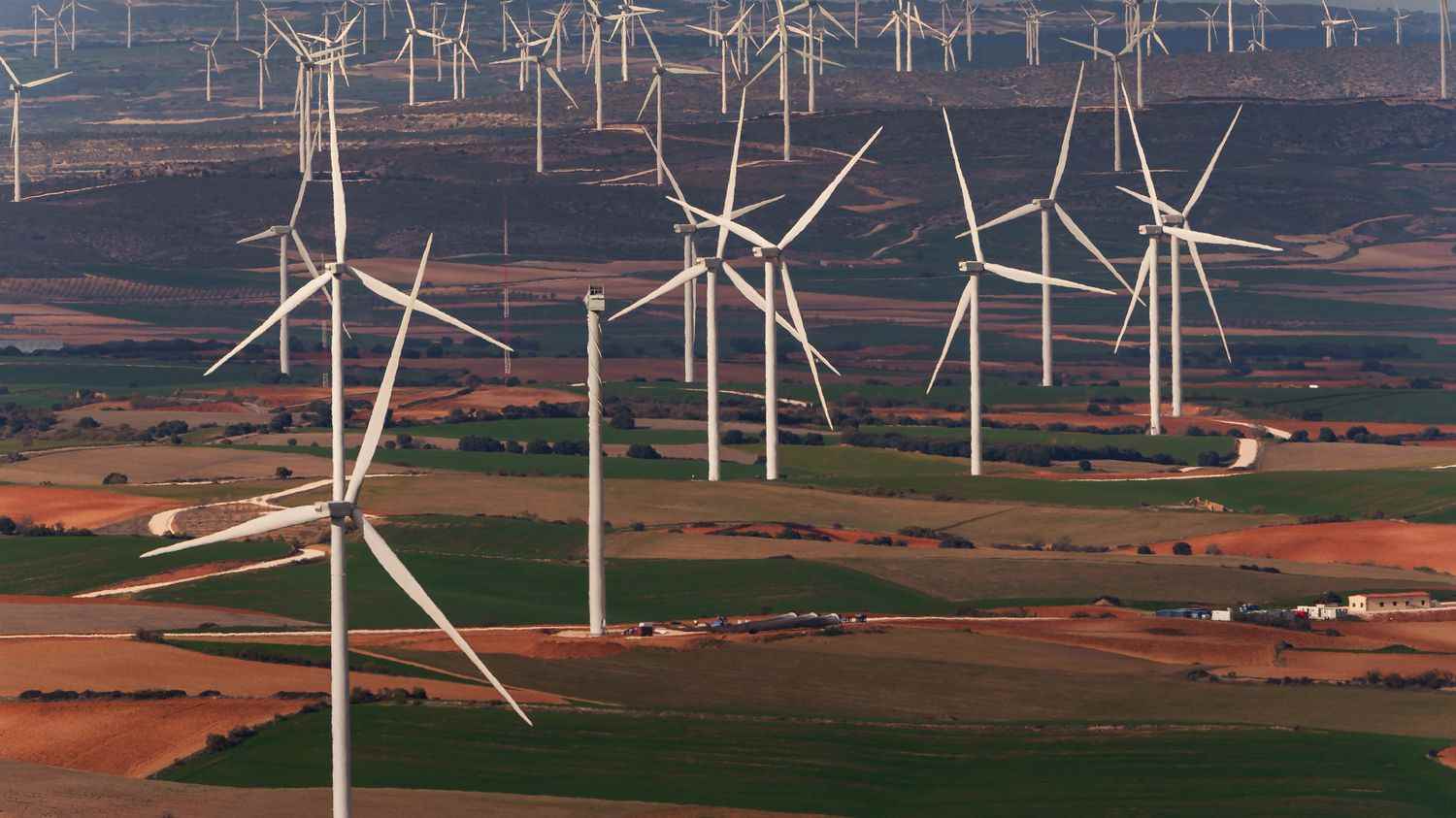The heat wave affecting France in mid-June, unprecedented in its precocity, reminds us of the challenge of the fight against global warming and the development of renewable energies. Direction Germany and Spain, the main European producers of wind energy.
In Germany, 2% of the country for wind turbines in 2032
The Greens associated with power in Berlin have made the development of renewable energies one of their priorities. Under their influence, the government has just presented a bill providing for more space for wind turbines, with some regional differences depending on exposure to the winds.
Wind turbines currently cover 0.8% of the country. Their share should increase to 1.4% in 2026 and 2% by the end of 2032. In many regions, legislation prohibits the construction of a wind turbine within 1,000 m of homes. In Bavaria, one of the most energy-consuming industrialized regions, the regulations provide for a distance of dic times its height between the equipment and the nearest house. The Green Robert Habeck, Minister of the Economy and author of the project, expects resistance. “There are resistances, concerns and fears in many regionsexplains the German minister. They will have to be taken seriously. But there’s a big difference between taking concerns seriously and letting them cause a blockage.”
“We will not allow ourselves to be dragged into inaction by these worries and fears as has been partly the case over the past few years.”
Robert Habeck, German Minister of Economy
Overall, however, the project is rather well received in the country. Slowly, minds are changing, a necessity for Claudia Kemfert, energy expert at the DIW institute in Berlin. “We have to reverse the priorities in order to develop renewablesexplains Claudia Kemfert. See what we have the right to do with the coal. We have the right to dig, to move entire villages or to disfigure landscapes… Things that we do not yet have the right to do with wind power, because until now the priorities were different. This is to say that the wind or the solar are more important for the system. We need it to accelerate the pace towards more wind and solar power.” In Germany, 80% of electricity consumption must be covered by renewables by 2030, according to the coalition. In 2021, renewables accounted for 42% of the energy mix in Germany.
Spain wants to double its wind power by 2030
Spain is the 5th country in the world and the 2nd in Europe, behind Germany, in terms of wind power. According to the manager of the Spanish electricity network, wind power is now the main source of electricity in the country. Contrary to what one might think, Spain has bet for the past 20 years on wind energy and not on solar energy. It has become a power in this area, the second in Europe. In 2021, wind energy has established itself as the first source of electricity in Spain with 23%, 21% for nuclear and 17% for gas. A development that must continue since the Spanish government wants to double the installed capacity by 2030, according to the National Integrated Energy and Climate Plan.
Difficult goals to achieve, according to Mario Sánchez-Herrero of the Platform for a New Energy Model: “What is happening in recent years is that the installation of the parks has been delayed, mainly for administrative reasons, approval of environmental assessments, as well as because of the pandemic, with the delay in the supply of materials and components. I think it will be difficult to achieve the goal of 50 gigawatts of earth energy in our country by 2030.” In 2021, more than 46% of Spanish electricity production came from renewable energies, mainly wind, but also hydraulic and photovoltaic. The objective set by the Spanish government is to reach 74% in 2030, which implies the commissioning of 22 gigawatts in eight years.
The head of government, Pedro Sánchez, declared in April 2022 that Spain “has sufficient resources to become the leading European country for the production and export of renewable energies”. According to experts, Spain has great potential in terms of renewable energies, hence the interest for investors. Regarding wind power, 600 projects are currently under review, according to the Spanish Wind Energy Association, particularly in terms of floating wind turbines.
Despite this strong potential, there is a major problem: interconnections with the rest of Europe. To export energy to European markets, Spain, like Portugal, needs to develop interconnections that necessarily pass through France. According to the objectives set, the level of interconnection capacity should reach 15% before 2030. However, for the moment it is less than 3%. The Spanish authorities say they are disappointed by the cooperation of France.
